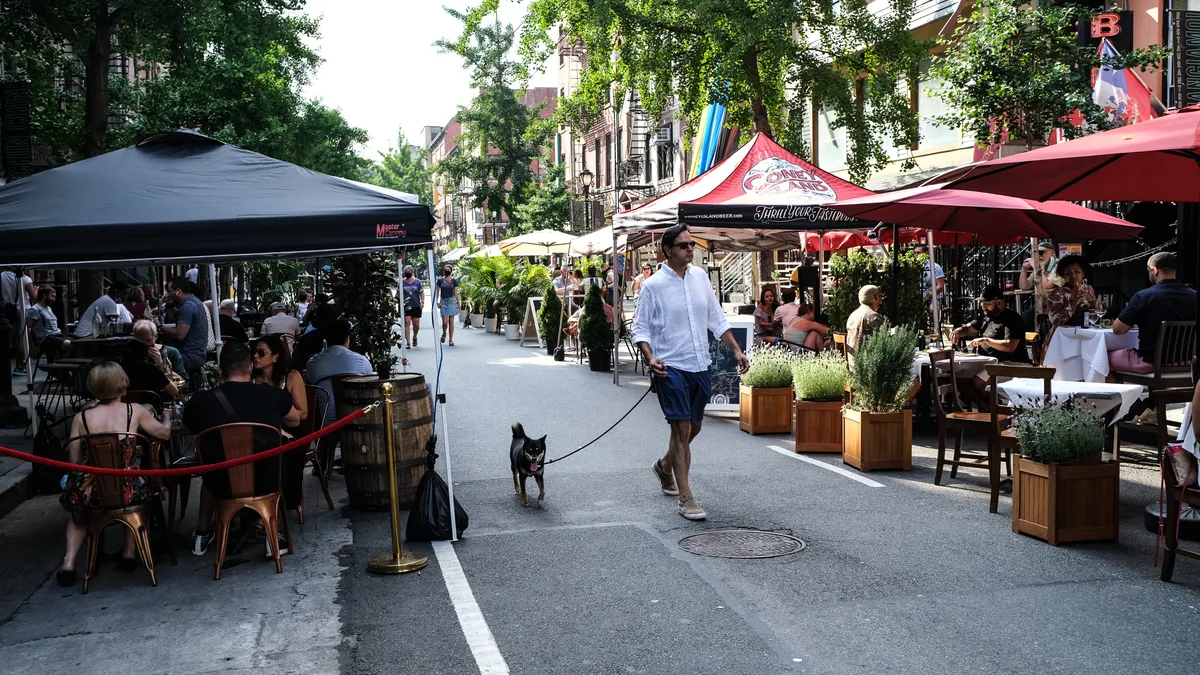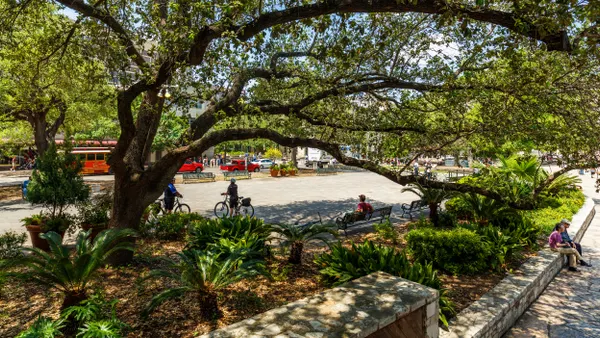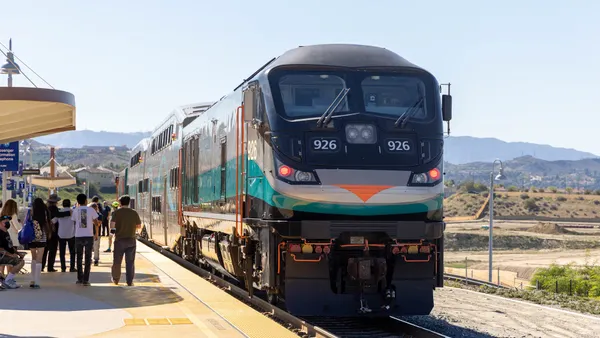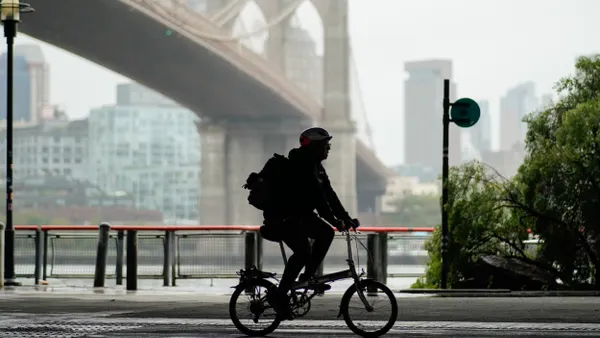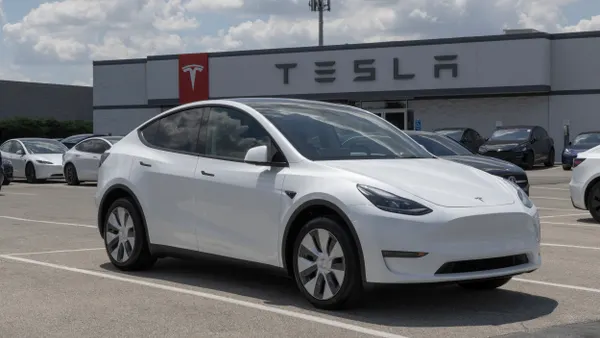Could there be a new vision for mobility and public space in cities, one that prioritizes walking, biking, rolling and taking shared forms of transportation? As cities strive to get residents out of cars to meet their climate goals, the curb could be at the forefront of innovative solutions. That was the perspective addressed earlier this month at a Curbivore conference panel titled “Building for The Future — Creating Better Cities, Streets, and Businesses.”
The curb should be flexible, said Ben Schrom, director of product management at Lyft. The pandemic has been a three-year-long experiment in which cities embraced programs like sidewalk dining streeteries and parklets that reimagined the use of public space.
“People can eat outside, it's a community space, people are hanging out — it’s, like, fun to be a pedestrian — and now [cities are], like, tearing half of them down to turn them back into parking spots,” Schrom said.
Ride-sharing and delivery companies are both culprits in congestion at the curb, but Lyft is working on mapping out curb space, a project that could maximize efficient pickups and drop-offs and reduce behaviors like double-parking, Schrom said.
Justin Robinson co-founded alcohol delivery service Drizly, but he’s moving delivery underground in his new venture. PipeDream Labs is “putting pipes underground and running autonomous robots through those pipes to deliver packages, food, groceries directly from retail into homes, apartments [and] offices,” he said. PipeDream bypasses curbs and streets altogether, an attractive option for cities trying to reduce congestion.
With cars dominating the streetscape, other modes of transportation fight for scraps, including electric scooter companies like Bird and Lime, said Prescott Watson, general partner and co-founder at mobility-focused venture capital firm RedBlue Capital.
“You have to realize they’re fighting over a tiny segment of space because cars have taken everything else,” he said.
Some strategies for getting people out of cars include congestion pricing (currently under debate in New York City and Boston), toll lanes and bus rapid transit — traffic corridors where buses get priority over other traffic.
Hilary Norton, founding executive director of Fixing Angelenos Stuck in Traffic and now commissioner for the California Transportation Commission, said she worked to establish BRT and toll lanes in the Los Angeles area, despite the region’s reputation for being car-centric. “I was part of the first express lanes that are on the 110 and the 10 freeway,” she said. “And at first, people were like, ‘That's terrible. And people will never change.’ But now we have the best bus system, the Silver Line,” a BRT line from El Monte through downtown LA to the coastal community of San Pedro.
To combat climate change, funding public transportation and charging the true cost of driving are not enough — cities need a unified vision to work from, RedBlue’s Watson said. That will take political leaders who can paint an appealing picture of what the future could look like. More biking, walking and transit could build community, said panelists.
“We have to think about getting people out of their cars,” said Eddie Navarrette, vice president of the Independent Hospitality Coalition. “You know, living in their little bubbles does not allow for people to really grow together and to innovate together.”


